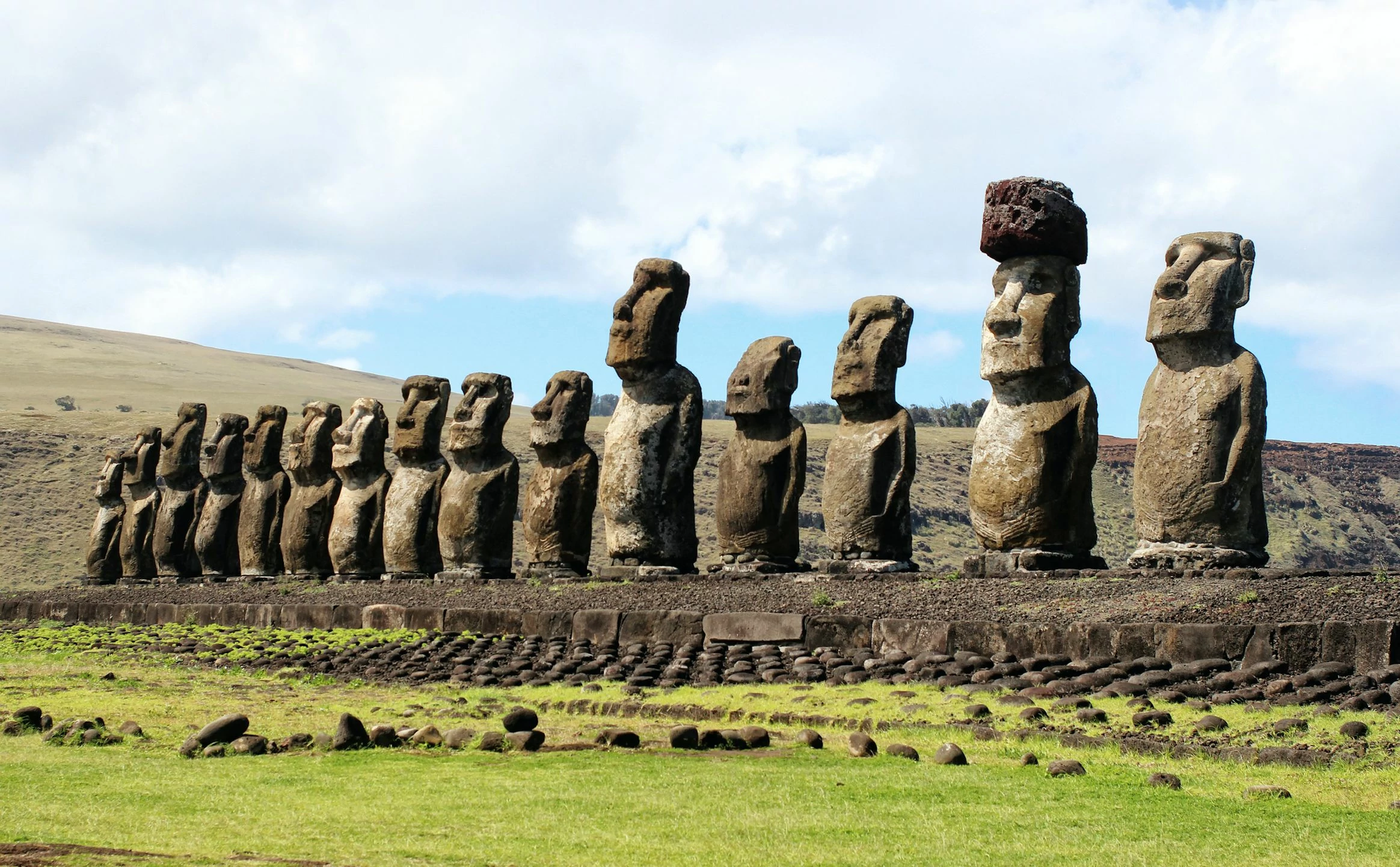Classical Oceania
Floating cities and stone heads facing the sea


The traditions of Oceanic art were almost entirely centered on the supernatural, and in some places they still are. Deities, ancestors, and spirits populate the hundreds of distinct religions that flourished in classical oceania. Gods could be large or small, and like many polytheistic cultures often mirrored the natural elements most essential to their unique geography. The people of the Society Islands venerated Ta'aroa, god of the sea and fishing, Tane, god of the forest, Ro'o, god of agriculture and Tu, god of war. The Rapa Nui god Uoke was believed to have raised the islands from the sea with his giant lever, and the vast pantheon of Polynesian gods included Kuku Lau, the god of mirages at sea, Kohara, the goddess of the tuna fish and Fisaga, god of the gentle breeze.
Ancestral beings were another important spiritual reality in the pacific cultures, from forebears so distant that they blurred the line between lineage and myth up to parents and grandparents. Do them honor to receive guidance and protection, ignore them at your peril. The ancestors were joined by a wide array of local spirits, folk heroes and mythological people and animals, filling out the rich traditions, superstitions and oral histories of the Pacific.
In a world of gods and long-dead grandparents, how do you commune with the spirits? Through sculptural vessels. In New Guinea and Melanesia, grand temple buildings were sites of worship, where the men of the community conducted ceremonies in communion with sacred images. In Polynesia, sacred sites were often in the open air, but protected by fences and ringed with buildings and altars. Such power was contained in these vessel objects that some sacred spaces were barred to all except individuals with sufficiently advanced personal magical power. In preparation for religious occasions, everything and everyone became an artwork. Chiefs wore elaborate jewelry, bodies were painted, and dance costumes transformed humans into feathered, striped, brightly colored silhouettes.
Anything with spiritual or social significance was fair game for beautification. Shields and weapons were engraved with protective designs, canoes were carved with elaborate patterns and figureheads, and even common dish-ware and textiles were brought to life through embellishment. Alongside the tasks requisite for survival—hunting, fishing, and gardening, nearly everyone was also expected to produce objects of beauty. Materials were often divided along gender lines, with men typically working in wood, shell and stone, and creating most of the ritual figures, and women working in textiles and fiber, weaving bark, cloth flax and more. As in all cultures, those with exceptional talents became sought-after far and wide. While today the names of these artists are lost, they were legendary in their time, passed down through oral histories for generations.
...
Got questions, comments or corrections about Classical Oceania? Join the conversation in our Discord, and if you enjoy content like this, consider becoming a member for exclusive essays, downloadables, and discounts in the Obelisk Store.